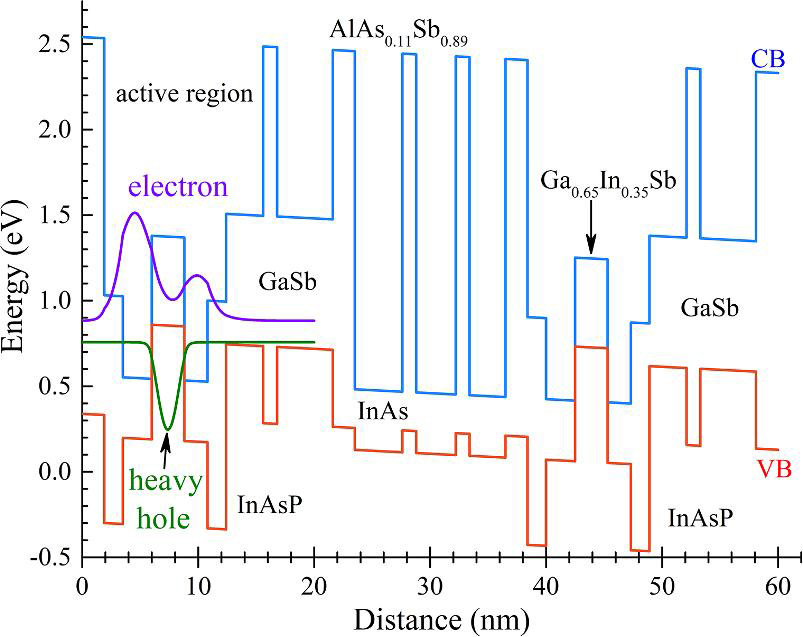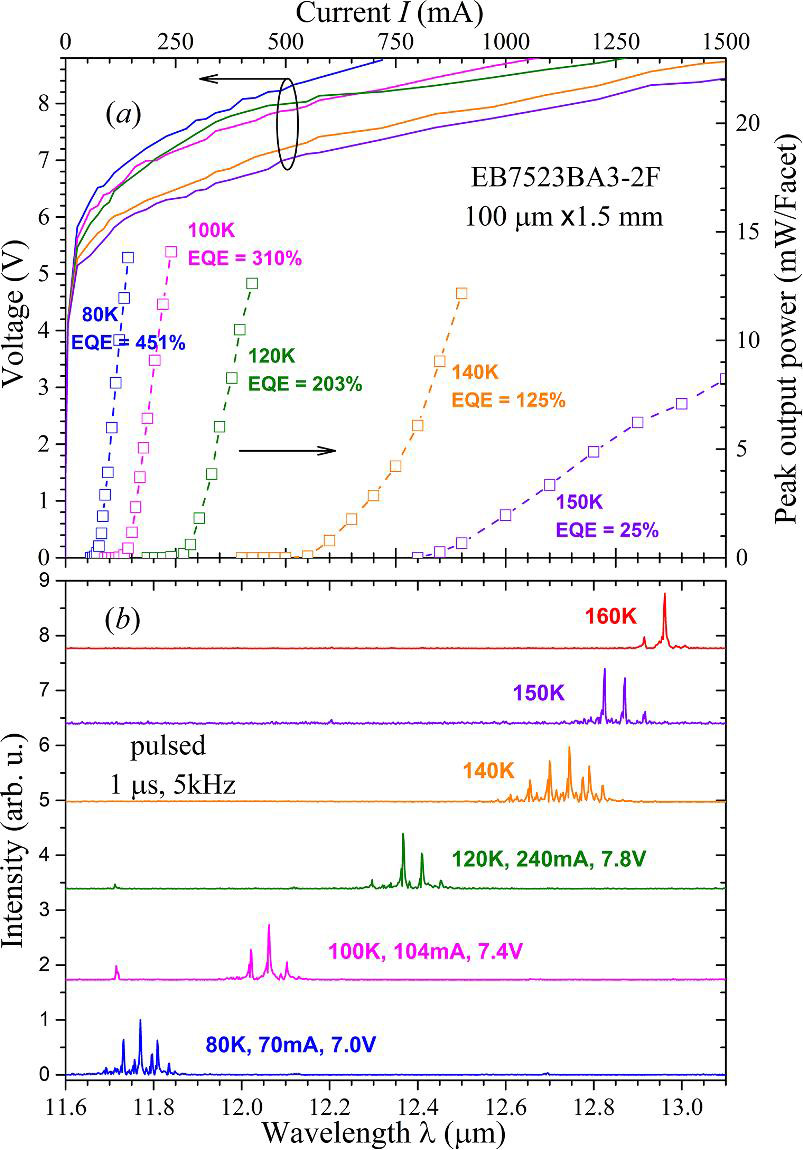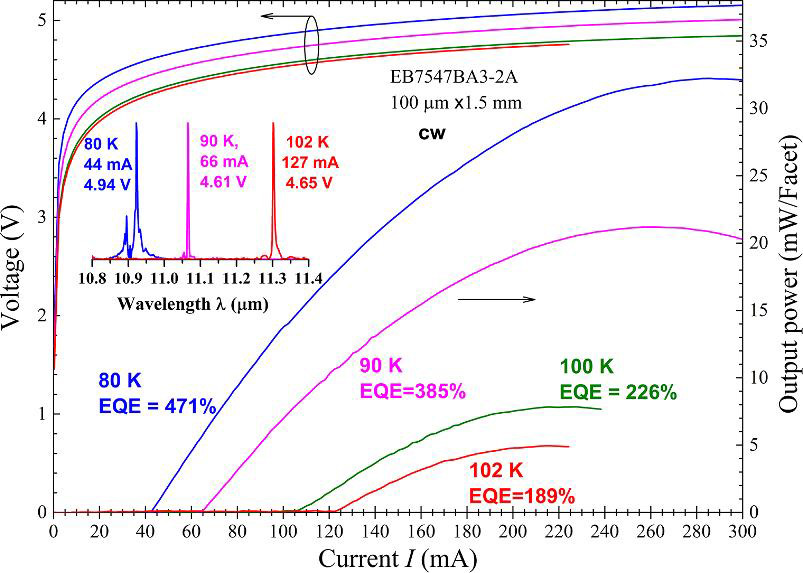News: Optoelectronics
26 January 2023
Enhancing interband cascades for longer wavelengths
University of Oklahoma and Sandia National Laboratories in the USA report on enhancing the performance of type-II interband cascade lasers (ICLs) in the wavelength range 10-13μm [Jeremy A Massengale et al, Semicond. Sci. Technol., v38, p025009, 2023].
Such devices offer efficient performance in the 3-8μm mid-wavelength infrared (MWIR) range, using mainly antimonide layers on gallium antimonide (GaSb) substrates. However, efficiency drops in the long-wavelength IR (LWIR) range of 8-15μm. This can be ameliorated somewhat by using indium arsenide (InAs) substrates. Further enhancements for longer wavelengths have also been developed, and the Oklahoma/Sandia team performed a wide-ranging exploration of their potential.
The mid- and long-wavelength ranges have many applications for gas/chemical sensing, imaging, and industrial process control. Also, there are atmospheric windows at 3-5μm and 8-12μm, offering potential for free-space communications.
The researchers used a type-II W-shaped structure for the quantum well (QW) active region where the electrons and holes recombine into photons (Figure 1). In two structures a pair of indium arsenide phosphide (InAs0.5P0.5) barriers around the well was used to alleviate reduced wavefunction overlap at long wavelengths.

Figure 1: Band-edge diagram for one cascade period of structures including InAs0.5P0.5 barriers in QW active region.
“This phosphorus-containing alloy has a lower valence band edge than that of the commonly used aluminium antimonide (AlSb) barrier and serves to lower the electronic state in the InAs QW, resulting in a reduced interband transition energy for photons at longer wavelengths,” the team explains. The team also designed and produced two structures without the InAsP insertions.
The InAsP barriers allowed the InAs electron wells to be reduced by 30-35% in thickness, compared with structures without. The researchers estimate the resulting increase in wavefunction overlap to be from around 15-17% to 18-19%, resulting in higher efficiency in recombining into photons.
The ICL core was wrapped in InAs separate-confinement layer (SCL), InAs/AlSb superlattice (SL) intermediate cladding layer, and heavily doped n+-InAs plasmon cladding layer for optical confinement. However, the n+ doping was reduced by 13% from previous work in an effort to reduce free-++carrier absorption of the laser light that would reduce laser efficiency.
The structures were grown by solid-source molecular beam epitaxy at 440°C. One exception to the solid-source precursors was the use of cracked phosphine (PH3) for the phosphorus component.
The materials were fabricated into broad-area lasers of 100μm and 150μm widths. The cleaved laser bars were about 1.5mm long. There was no facet coating.
Among the achievements of the resulting devices, the team reports: “ICLs that included the active-layer design change exhibited cw operation beyond 12μm, which is the first demonstration of broad-area ICLs operating in cw mode at such long wavelengths.”
Figure 2: (a) Current–voltage–power characteristics and (b) emission spectrum between 80K and 160K in pulsed mode for device with InAsP barriers. 
Also, the devices demonstrated improved thermal performance, operating at up to 40K higher than previously. The best device in this respect emitted at 12.97μm wavelength in pulsed mode at 160K (Figure 2). The threshold current density was 1267A/cm2.

Figure 3: Current–voltage–power characteristics in cw mode for device without InAsP barriers.
A device without the InAsP barrier achieved an output power of 32mW/facet in cw mode, “higher than any interband laser has achieved at such a long wavelength,” according to the team (Figure 3). The wavelength at 80K was 10.9μm, and the threshold current density 26.7A/cm2. The cw lasing continued up to 102K, and in pulsed-mode up to 137K. At this temperature, the threshold was 325A/cm2, and the wavelength had red-shifted to 11.5μm, the longest reached for the devices with a regular W-QW without InAsP barrier.
Type-II interband cascade lasers MWIR GaSb substrates InAs substrates AlSb
The author Mike Cooke is a freelance technology journalist who has worked in the semiconductor and advanced technology sectors since 1997.








